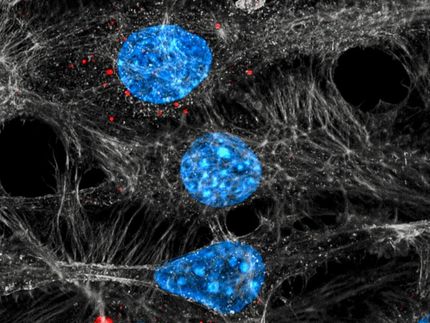University of Pittsburgh Cancer Institute Launches Study on New Screening Tool for Early Detection of Lung Cancer
Advertisement
As one of the deadliest forms of cancer, lung cancer is often detected after symptoms have appeared and long after it has spread, resulting in a five-year survival rate of only 14 percent. While advances in surgery, chemotherapy and radiation may increase the length of survival in patients with advanced disease, they have not significantly reduced the overall mortality rate from lung cancer.
Researchers at the University of Pittsburgh Cancer Institute (UPCI) are examining a promising technology that may allow physicians to screen high-risk people for lung cancer before they develop symptoms of the disease. The new screening tool, spiral CT (computed tomography), has shown promise in early studies in its ability to detect some types of small lung tumors that could possibly grow and result in the spread of cancer.
Through a large and comprehensive study that seeks to recruit 6,000 smokers and ex-smokers in the Pittsburgh area over the next four years, UPCI researchers plan to thoroughly examine the efficacy of spiral CT as a lung cancer screening tool. If determined to be an effective tool, spiral CT could be used in high-risk populations to discover and treat lung cancer before the cancer has had a chance to spread.
"We know that when lung cancer is found and treated early, the survival rate improves substantially. As a result, there is great need for an effective screening tool that we can use to detect lung cancer earlier in patients who are at risk for developing the disease," said Joel Weissfeld, M.D., principal investigator of the study and associate professor of epidemiology. "This need is especially crucial in our community given that nearly 128,000 people in Allegheny County are at risk for lung cancer by virtue of their advanced age and cigarette smoking history."
During a CT scan, X-ray beams pass through the chest at different angles and are processed by a computer to produce cross-sectional images of the entire area. A large machine with a hole in the center where a patient lies on a table, CT is preferred for diagnosing many different cancers, including lung cancer. It allows a physician to precisely determine the location, size and extent of a tumor. Spiral CT scanners have improved the accuracy of detecting a nodule, or small spot on the lungs, because they allow images of the lungs to be obtained in a single breath hold (usually in 15-20 seconds). This decreases the chance that a nodule would be missed due to the respiratory motion of the lungs during breathing. A spiral CT scan results in a faster image with a lower X-ray dose than a conventional CT scan.
According to Dr. Weissfeld, who also is leader of the cancer epidemiology, prevention and control program at UPCI, the current study is using spiral CT differently than it commonly has been used. "Instead of using spiral CT to diagnose lung cancer, we will be using it to screen for nodules in the lung, some of which could turn out to be cancer, " said Dr. Weissfeld. "This potentially represents a better way to detect and cure lung cancer earlier, but we won't know for certain until we conduct a thorough study to answer important questions about the use and efficacy of this technology. This study will help us determine whether spiral CT can be used to detect lung cancer the way mammography is being used to detect breast cancer." Dr. Weissfeld added that the study also will use questionnaires, blood tests and lung function tests to learn if there is a difference between patients with CT-detected lung cancer and without CT-detected lung cancer. The study is a major part of the recently funded five-year, $12 million SPORE (Specialized Program of Research Excellence) in Lung Cancer from the National Cancer Institute. The study is recruiting participants who are current smokers and ex-smokers between the ages of 50 and 79 who have smoked for at least 25 years. In addition to receiving a CT scan, participants also will receive a pulmonary function test. People who are interested in particip
























































